Cleveland Public Square is a nine and half acre plot of land located in downtown Cleveland, Ohio. The area was just part of the original plat surveyed by General Moses Cleaveland and others in 1796, which eventually became the City of Cleveland (spelling changed from “Cleaveland”). In the last few years, the City has redeveloped the area into a pedestrian-friendly green space featuring classes, art installations, a splash pad, concerts, and other community events.
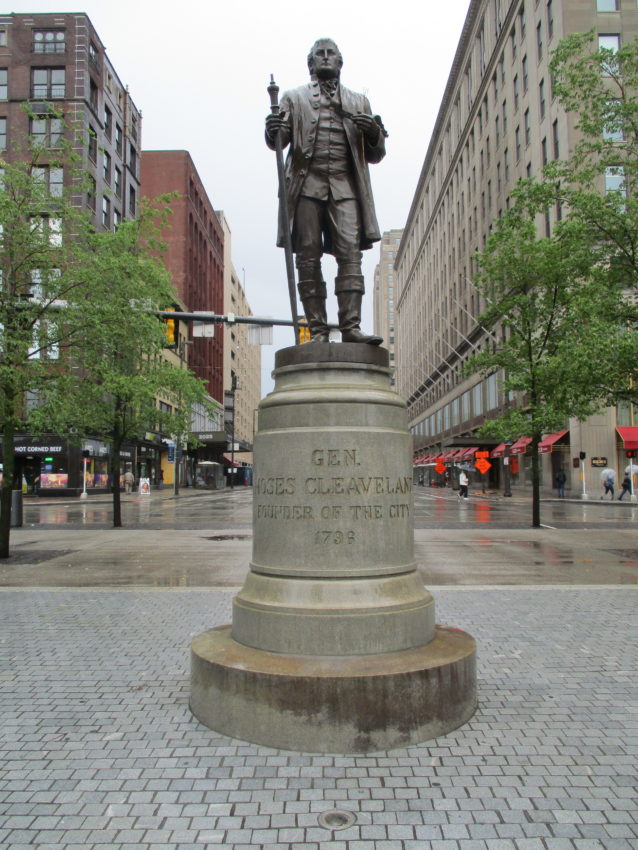
In June of 2020, what began as peaceful protests in Public Square turned into rioting. While the destruction affected commercial property, it also included monuments such as statues of Moses Cleaveland and Tom. L. Johnson, an early 20th century social reformer, and the Old Stone Church Bell, which, cast in 1865, was eventually placed in front of the Church as reminder for the “Year of Peace” when the Civil War ended. The Group Plan Commission moved quickly to rebuild Public Square, including removal of the graffiti on its artwork and monuments.
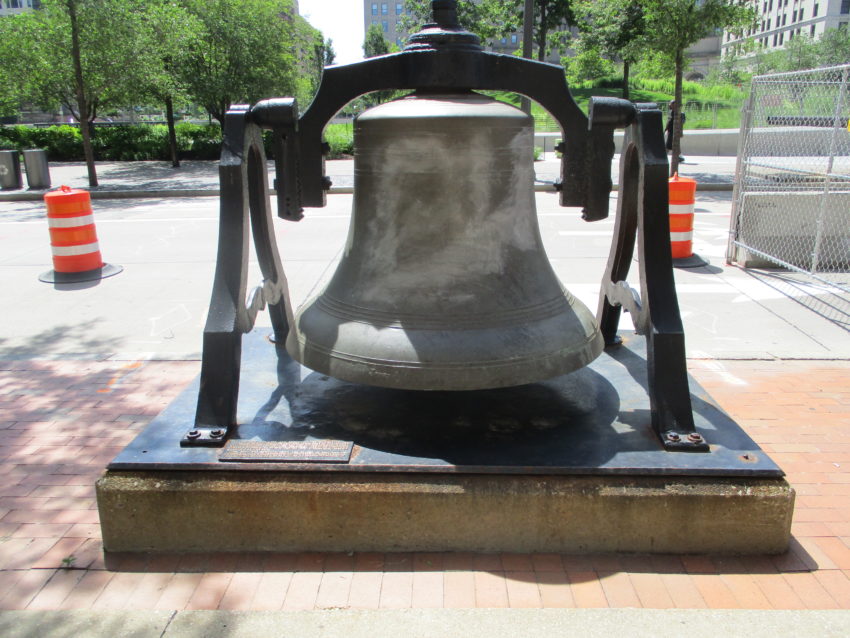
The McKay Lodge Conservation team was pleased to be a part of the team that helped restore Cleveland Public Square. Conservators Christina L. Simms and Marcin Pikus assessed several monuments that had been tagged, and while some of the graffiti had been previously mitigated, remnants of paint remained of the surface of the sculptures.
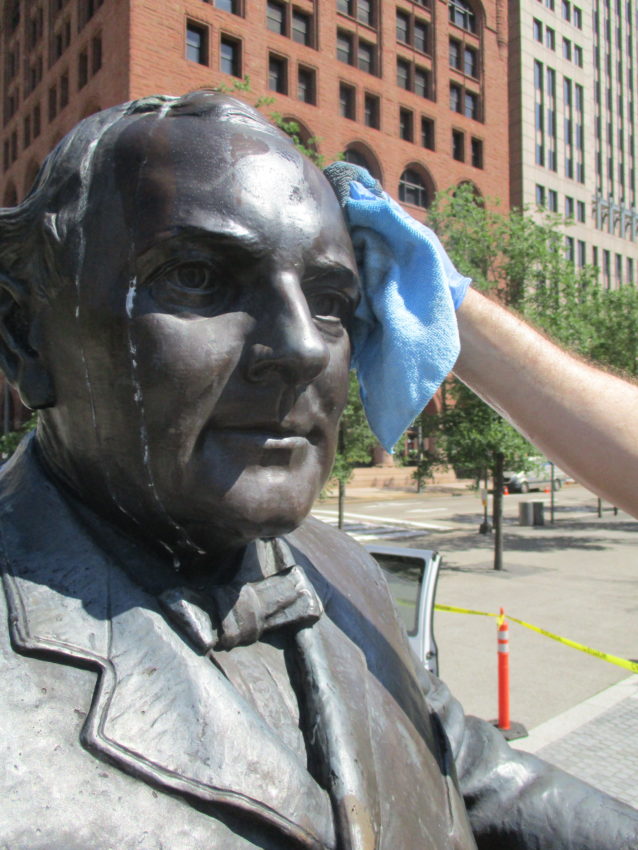
While general graffiti removal can be performed by others, special considerations and products are required for successful graffiti removal on works of art and monuments; this type of work should be performed by professional art conservators with knowledge and experience in the products and methods needed. The same chemicals used to remove the graffiti may also adversely affect the underlying artwork’s materials.
McKay Lodge Conservation Laboratory conservators are, and will continue to be busy, removing graffiti from these protests from Washington, DC through Columbus, Ohio and Indianapolis, Indiana, and to Oakland, California.
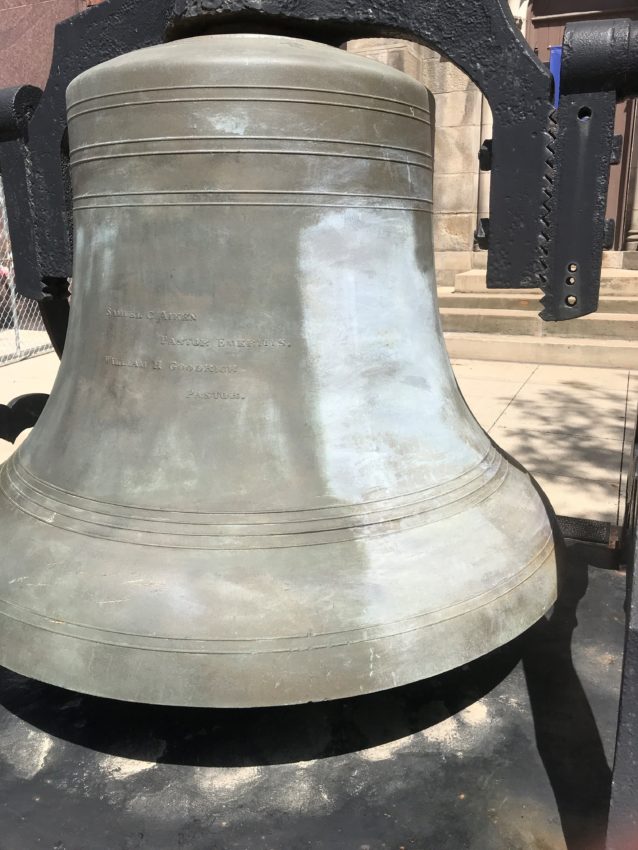
Conservator Pikus and Simms started to remove the graffiti with a combination of commercially-available products and solvents to reduce graffiti. In some cases, the paints were removed easily, but in other instances extended dwell times of the products were necessary to remove graffiti. The surfaces which included granite stone bases and bronze statues were then carefully rinsed with a hot water pressure washer for two reasons: to help lift the paint from the substrate and to rinse any remaining residues from the surface.
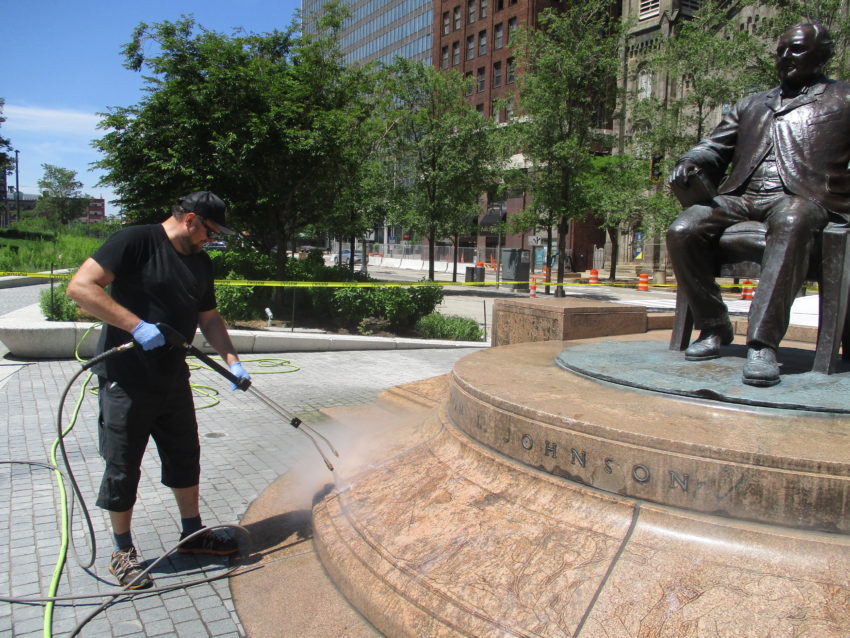
The graffiti removal was successful. Both the granite and bronze components of the monuments were not adversely impacted by the conservation treatment; however, surface coatings previously applied to these objects were affected. These coatings which include wax or acrylic resins are applied by conservators to help protect outdoor sculpture from the elements and pollution.
In the case of the monuments in Cleveland Public Square, bronze cultural heritage items like the Old Stone Church Bell, Cannon on Rockwell Avenue, and Tom. L. Johnson monument required an application of a new protective coating after the graffiti removal.
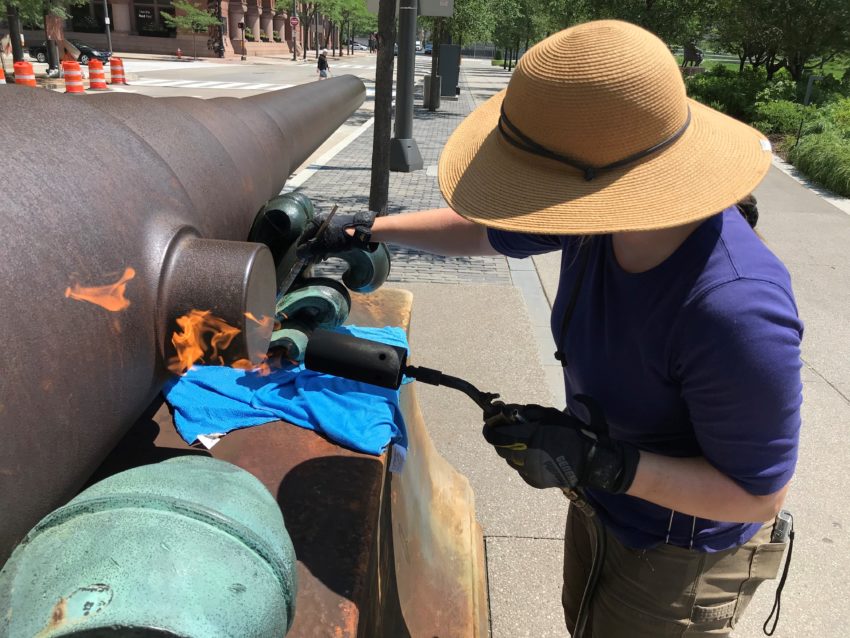
Conservator Simms used a torch to heat the bronze surface of Tom. L Johnson then applied a microcrystalline wax blend developed by McKay Lodge Conservation Laboratory. The wax coating visually saturates the blue/green corrosion and at the same time halts future corrosion. Simms repeated this process on the cannon on Rockwell Avenue.
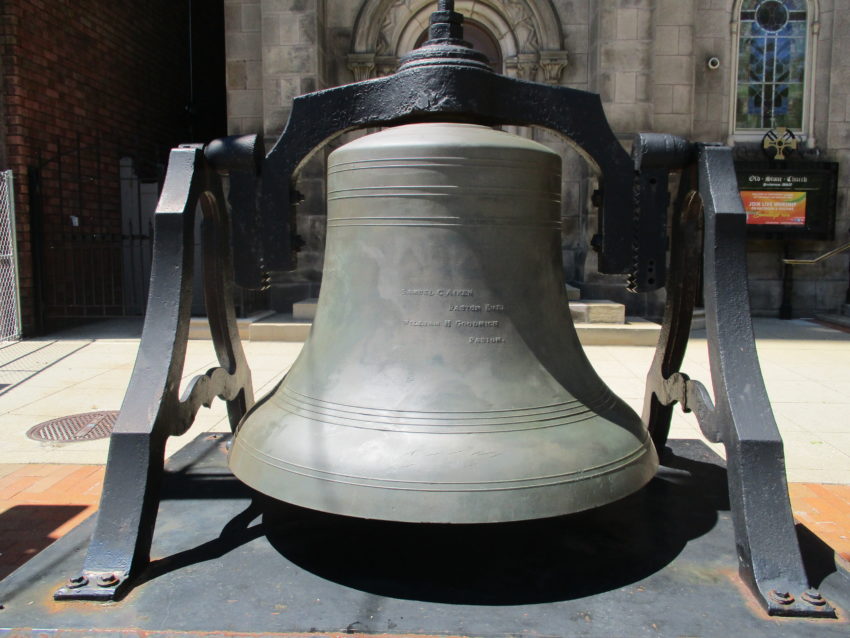
The Old Stone Church Bell required a slightly different approach. Since sometimes blue/green patinas are sensitive to heat, Simms applied a paste wax at ambient temperatures. Once the new protective coatings dried, Simms buffed the surfaces to create an even sheen. The treated monuments in Public Square now appear revitalized, and they are ready to be enjoyed along with the rest of the public space by Clevelanders.
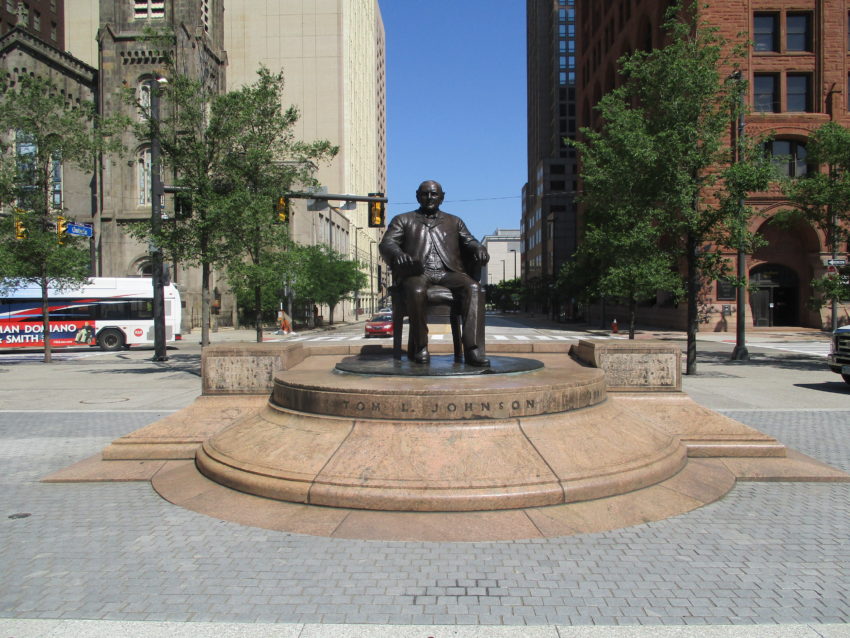
While there is so much to see and do in the City of Cleveland, Public Square located in the heart of the Downtown is a great place to start.
